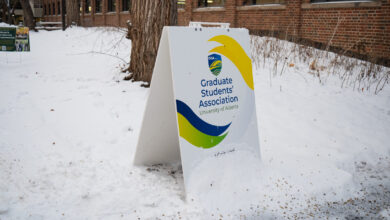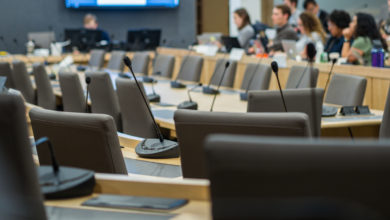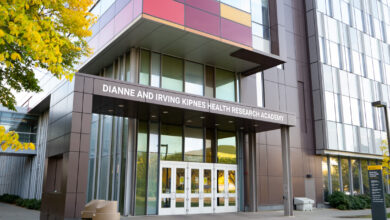 Lily Polenchuk
Lily Polenchuk“Walking the Tightrope,” a 2024 survey of Canadian students conducted for the Canadian Alliance of Student Associations (CASA) by Abacus Data, includes information on the cost-of-living and quality of life of post-secondary students. According to the survey data, three in four students faced affordability challenges, with one in five having used a food bank during their last semester.
University of Alberta Students’ Union (UASU) Vice-president (external) Abdul Abassi spoke with The Gateway about the survey. According to Abassi, the data collected from the survey outlines “some pretty concerning statistics” and that the “student cost-of-living is rising a lot.”
Abacus Data surveyed 1,500 students in Canada from May 8 – 18, 2024. According to the survey data, 40 per cent of students skipped meals due to costs, 24 per cent struggled to pay rent, and four per cent experienced homelessness. The survey also found that Indigenous students are facing higher levels of homelessness with nine per cent having experienced homelessness.
“Rent has increased 33 per cent before inflation in the past four years, and now it is the number one reason why people are coming and using the Campus Food Bank [(CFB)],” Abassi said. According to Abassi, the CFB has seen an increase in usage by 600 per cent over the past five years.
Abassi also noted that they’ve been seeing a similar trend in housing, with the “Garneau [area] having a two per cent vacancy rate as of last year.” According to Abassi, the UASU is forming a student housing strategy with the City of Edmonton to help students afford housing.
Mental health and transit services are a priority, Abassi says
Mental health was another issue noted in the data, with one in three students rating their mental health as poor.
“We also got $4 million into mental health this year, from the provincial government. The biggest stressors have been tuition, food, and rent,” Abassi said. According to the data collected, the most accessed resources for mental health were informal mental health resources at 41 per cent. Additionally, 32 per cent of students sought-out self-directed programs and less than 28 per cent were able to access on-campus counsellors.
Edmonton Transit Service (ETS) was another focus for Abassi, as he noted that the UASU is working “towards how to make transit safer for students.”
“We’re running surveys with ETS and making sure that we are working towards tangible action items,” Abassi said. The surveys will allow the UASU to sit down with ETS and “form action items” and consequently allow the UASU to “apply those action items every single year.”
International students face additional affordability challenges
According to the survey, 53 per cent of international students have skipped meals due to costs. Comparatively, 36 per cent of domestic students skipped meals due to costs.
Abassi stated that the UASU has been working to help international students with the affordability crisis.
“Something we have been working on this year, and it will also be coming out soon, is we’re working on forming a toolkit for international students so they know where they can find housing,” Abassi said.
In the face of the affordability crisis, Abassi said that he’ll be working towards putting his energy into realistic action for students.
“We’re putting energy into things that our students need, [and] that our students want, but at the same time are realistic,” Abassi said.




